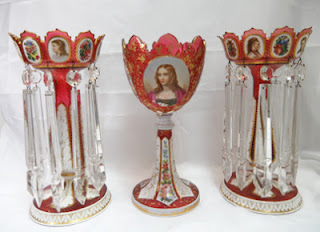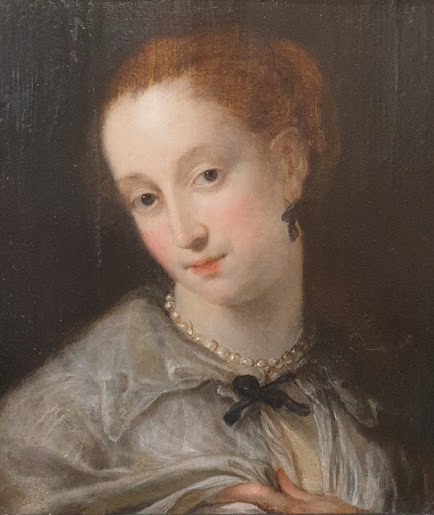Bohemian Glass
Bohemia, now a part of the Czech Republic, has a long history and tradition in glass making. Decorative glassware produced in this region was famous for its excellent cut and engraving and it has always been a special favourite among collectors.
It all began when the glass workers discovered that potash combined with lime created a colourless glass that was more stable than the delicate Venetian glass. Although the history of Bohemian glass dates from the 13th century it was not until the second half of the 17th century when Bohemian glass witnessed a significant boom making it one of the leaders in the field. During this time the high level of craftsmanship was combined with various traditional and innovative techniques to create highly desirable artifacts. Bohemian artisans began to experiment with shapes and more complex engraving which was highly suited to this type of glass. Many other innovations were introduced such as enameling, lustred glass, milk glass as well as gilding to the edges and the body of the decorated area.
After a period of great prosperity Bohemian glass factories began to decline by 1750. The industry was yet again revived in the early 19th century when advances in the technology allowed the Bohemian glasshouses to produce fine glassware on a large scale.
Here at Grays our dealers Mousa Antiques and Mayfair Antiques have collected the best examples of Bohemian glass:
It all began when the glass workers discovered that potash combined with lime created a colourless glass that was more stable than the delicate Venetian glass. Although the history of Bohemian glass dates from the 13th century it was not until the second half of the 17th century when Bohemian glass witnessed a significant boom making it one of the leaders in the field. During this time the high level of craftsmanship was combined with various traditional and innovative techniques to create highly desirable artifacts. Bohemian artisans began to experiment with shapes and more complex engraving which was highly suited to this type of glass. Many other innovations were introduced such as enameling, lustred glass, milk glass as well as gilding to the edges and the body of the decorated area.
After a period of great prosperity Bohemian glass factories began to decline by 1750. The industry was yet again revived in the early 19th century when advances in the technology allowed the Bohemian glasshouses to produce fine glassware on a large scale.
Here at Grays our dealers Mousa Antiques and Mayfair Antiques have collected the best examples of Bohemian glass:
Bohemian green glass vase with two handles, beautifully painted with gold design, circa 1840. Offered by Mousa Antiques.
Bohemian green glass box with metal base and gold decoration, circa 1860. Offered by Mousa Antiques.
Bohemian blue glass goblet with twisted stem. Offered by Mousa Antiques.
A pair of red Bohemain overlay glass lustre vases and a centrepiece with hand painted portraits, 19th century. Offered by Mayfair Antiques.
A pair of green Bohemian overlay glass vases, 19th century. Offered by Mayfair Antiques.
A pair of green Bohemian overlay glass lustre vases, 19th century. Offered by Mayfair Antiques.
For more information visit www.graysantiques.com






.jpg)

Comments
Post a Comment